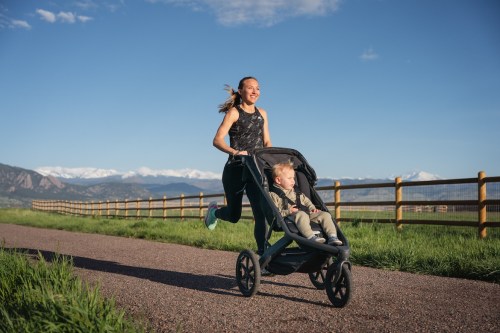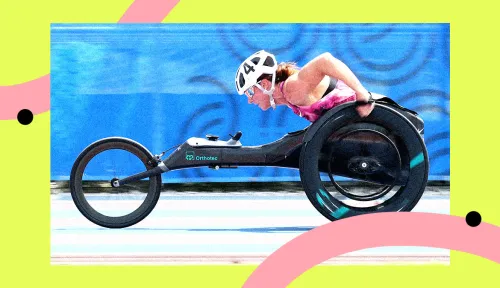There’s been an unusual question swirling around this year’s NBA finals: Do the Denver Nuggets have an unfair advantage over the Miami Heat because they’re based in “Mile High City”? According to ESPN, no current pro basketball team has ever won more at home compared to on the road than the Nuggets. And some people chalk that up to the effects of altitude training, since working out at high elevations is known to improve endurance by increasing red blood cells.
Experts in This Article
But in recent years, sports science experts have also been looking into a different strategy that might distinctly benefit Miami’s team (and is something many more of us have access to, whether we want it or not): heat training.
Exercising in the heat adds an extra dimension of physical and mental challenge to a workout, since the thermal stress of the heat and humidity makes it more difficult for your body to stay cool enough. This is why some athletes deliberately subject themselves to hot environments to help their bodies adapt by increasing blood plasma volume.
But, is heat training safe? And is it as effective as altitude training?
The benefits of heat training vs altitude training
Heat training involves exercising in high temperatures (85 to 100 degrees F) to increase the body’s ability to dissipate heat and maintain core temperature.
“It can improve endurance, reduce fatigue, and enhance cardiac function and thermoregulatory responses,” explains exercise physiologist Karissa Bollinger, an ultramarathon runner, and the owner of Golden Teacher Wellness LLC. “Additionally, it may increase muscle glycogen storage and improve aerobic and anaerobic performance.”
While there are some overlapping benefits between heat training and altitude training, the principles are quite different.
Altitude training involves regularly exercising at high altitudes (usually over 1,500 meters above sea level) to improve athletic performance.
“It stimulates the body’s production of red blood cells and helps increase the amount of oxygen carried in the blood, which may help improve endurance performance,” she notes. “Additionally, altitude training may also improve running economy and increase the anaerobic threshold.”
She explains that while certain athletes may benefit from doing either heat training or altitude training (or both), whether it is better to do heat training or altitude training primarily depends on that athlete’s specific sport, event, and individual needs.
“In general, heat training may benefit sports such as long-distance running or cycling in hot, humid conditions,” suggests Bollinger. “On the other hand, altitude training may be more beneficial for endurance and high-intensity sports such as distance running, cycling, rowing, and cross-country skiing.”
What are the physiological differences that occur when training in heat vs altitude?
In the heat, the body experiences a range of adaptations to cope with the increased thermal stress. “These include an increase in blood flow to the skin, which helps dissipate heat through sweating and vasodilation of the blood vessels. As a result, plasma volume and heart rate may increase to help maintain blood pressure during exercise,” explains Bollinger. “Additionally, the body increases its production of heat shock proteins and activates the renin-angiotensin-aldosterone system, which helps regulate fluid balance and electrolyte levels in response to dehydration.”
Bollinger contrasts this against the physiological adaptations that result from training at altitude, which are brought about due to the reduced availability of oxygen in the air at higher elevations.
“These [changes] include an increase in ventilation, an increase in red blood cell production, and an increase in capillary density. These adaptations help the body transport oxygen more efficiently to the working muscles and maintain aerobic performance at higher altitudes,” explains Bollinger. “Additionally, training at altitude may also increase muscle buffering capacity, which helps delay the onset of fatigue during high-intensity exercise.”
Essentially, there are shared benefits, but each environmental stressor leads to different physiological adaptations. Heat training primarily helps to enhance thermoregulatory function (your body’s cooling mechanisms) and improve heat tolerance, while altitude training helps to improve oxygen transport, aerobic capacity, and oxygen utilization at high altitudes.
Also, athletes typically need to spend several weeks to months at high altitude to see positive adaptations. Yet research suggests you can see the effects of heat training after just one to two weeks of working out in high temps for an hour a day, says Bollinger.
What are the downsides of heat and altitude training?
There are limits to how much you can safely train in the heat—prolonged exposure can increase your risk of heat exhaustion, dehydration, and other heat-related illness, warns Bollinger. Look out for unusually heavy sweating, weakness, fatigue, dizziness, headache, muscle cramps, or nausea. “In severe cases, heat stroke may occur, which is a potentially life-threatening condition that requires immediate medical attention.”
Bollinger also points out that heat training may not be as effective for improving aerobic capacity and exercise economy as altitude training. And it simply feels harder, which can lead to less intense workouts (or skipping workouts altogether).
Meanwhile, she says that training at high altitudes can put you at risk for altitude sickness, which can cause symptoms like headaches, dizziness, and nausea. Bollinger explains that while altitude training is intended to improve aerobic function, if you have to scale back the intensity and duration of your training due to the difficulty working out in air with less oxygen, altitude training can backfire. Also, know this: “The adaptations induced by altitude training may be short-lived and may not transfer directly to sea-level conditions,” she adds.
How everyday athletes can take advantage
Altitude training is typically a luxury only feasible for elite athletes, but Bollinger says that recreational athletes can incorporate heat training or altitude training into their regimen if they have the means and medical clearance to do so (and ideally a coach who can help them do it safely).
Even if you live at lower altitudes, you can try wearing an altitude training mask or take an altitude training class.
Heat training is more likely going to be the most feasible option for the average person, though. “Everyday athletes can try to incorporate heat exposure into their training regimen by wearing extra layers of clothing, working out in a heated room or sauna, or during the hottest parts of the day,” Bollinger suggests.
To help maximize the safety and effectiveness of heat training, Bollinger shares some tips:
1. Acclimatize gradually:
Start with shorter heat exposure workouts. “It is best to gradually increase the duration and intensity of heat exposure over time to avoid heat-related illnesses,” advises Bollinger. This will help give your body time to adjust to the heat.
2. Stay hydrated:
Drink plenty of water before, during, and after your workout to maintain proper hydration.
3. Dress appropriately:
Wear light-colored, loose-fitting clothes that allow sweat to evaporate. Avoid dark colors or tightly fitted clothing, since it can trap heat.
4. Time your workouts:
When it’s a true scorcher out there, avoid exercising during the hottest part of the day. Instead, aim for early morning or late evening workouts when the temperature is cooler.
5. Take breaks:
It is essential to take frequent breaks to cool down if you feel like you’re overheating.
6. Use sunscreen:
Apply sunscreen before heading outside to protect yourself from harmful UV rays.
5 Athletes Share Why There’s Never Been a Better Time to Be a Mom Who Runs—And What More the Industry Can Do

5 Ways Paralympian Tatyana McFadden Has Avoided Burnout Throughout Her 20-Year Wheelchair Racing Career

3 Things Paralympic Flag Bearer Nicky Nieves Does Before a Game to Feel Her Best on the Volleyball Court

7. Listen to your body:
If you feel dizzy, lightheaded, or experience any other unusual symptoms, stop your workout immediately and rest in the shade or a cool area.
8. Don’t skip the cool down
Help bring your body back to resting gradually through a solid cooldown, like a 10-minute walk at the end of your run.
9. Consult your doctor:
If you have an underlying medical condition or are taking any medication, consult your doctor before starting a heat training program.
Sign Up for Our Daily Newsletter
Get all the latest in wellness, trends, food, fitness, beauty, and more delivered right to your inbox.
Got it, you've been added to our email list.








